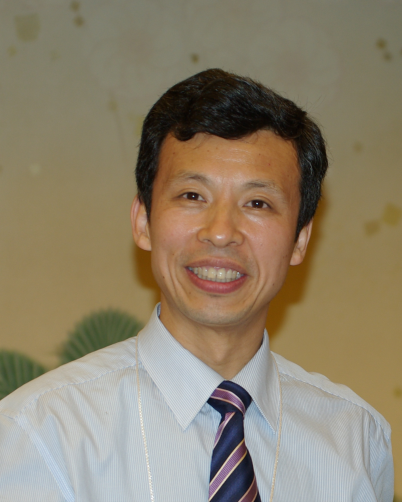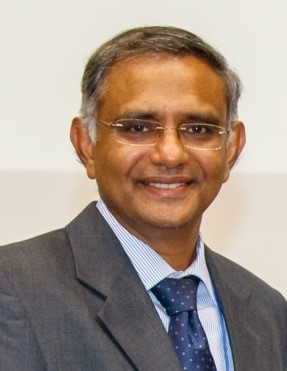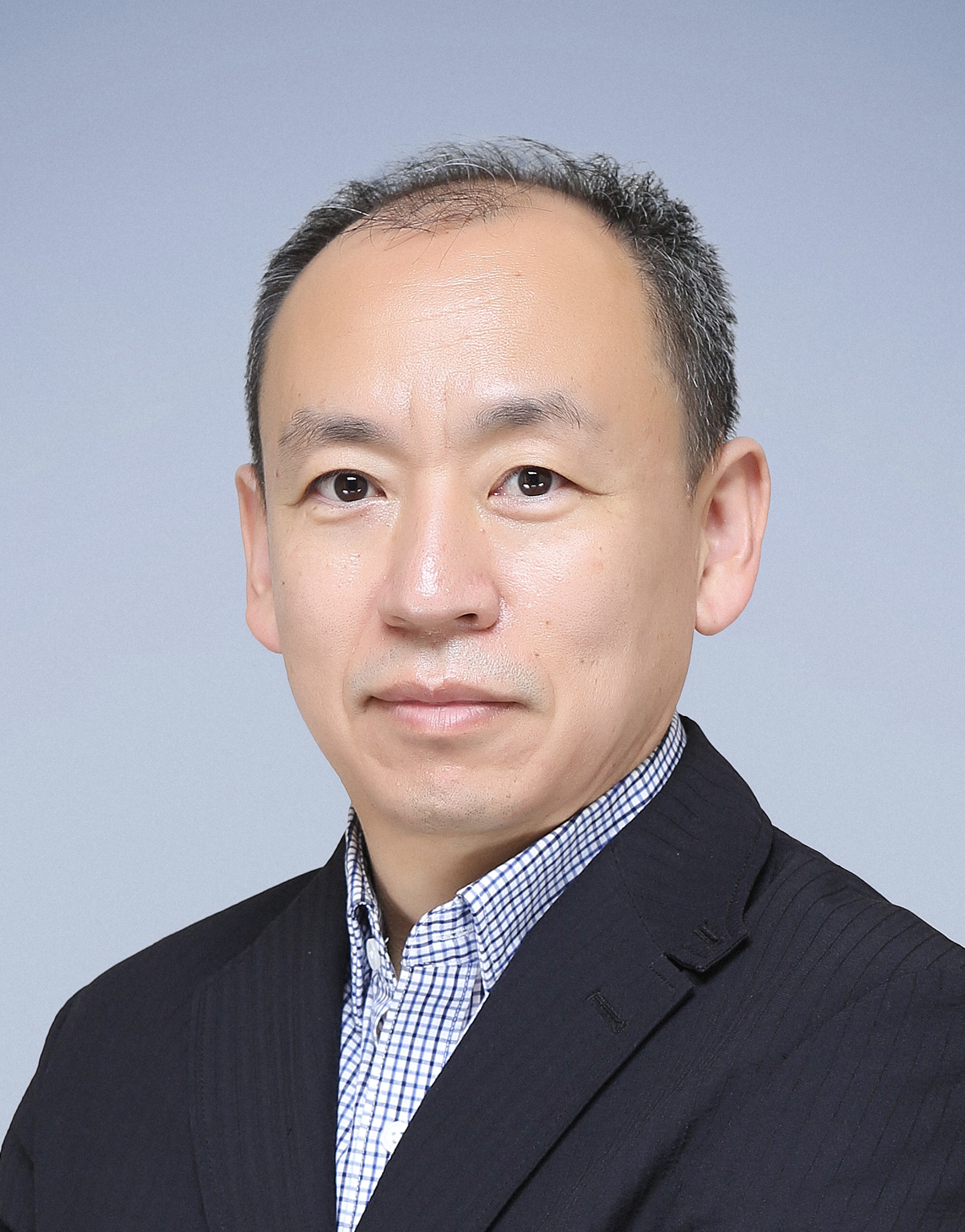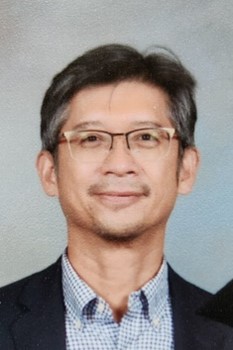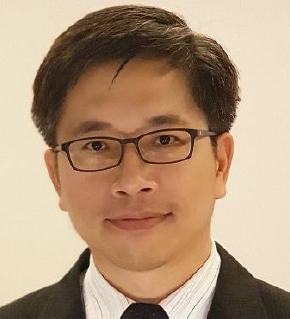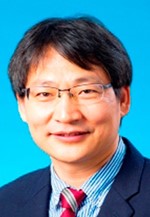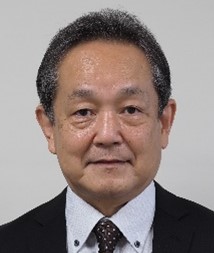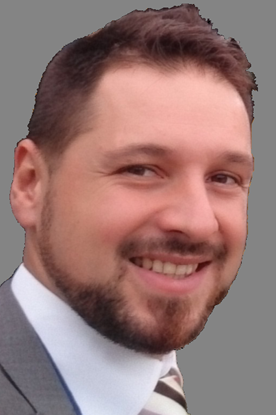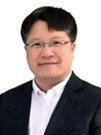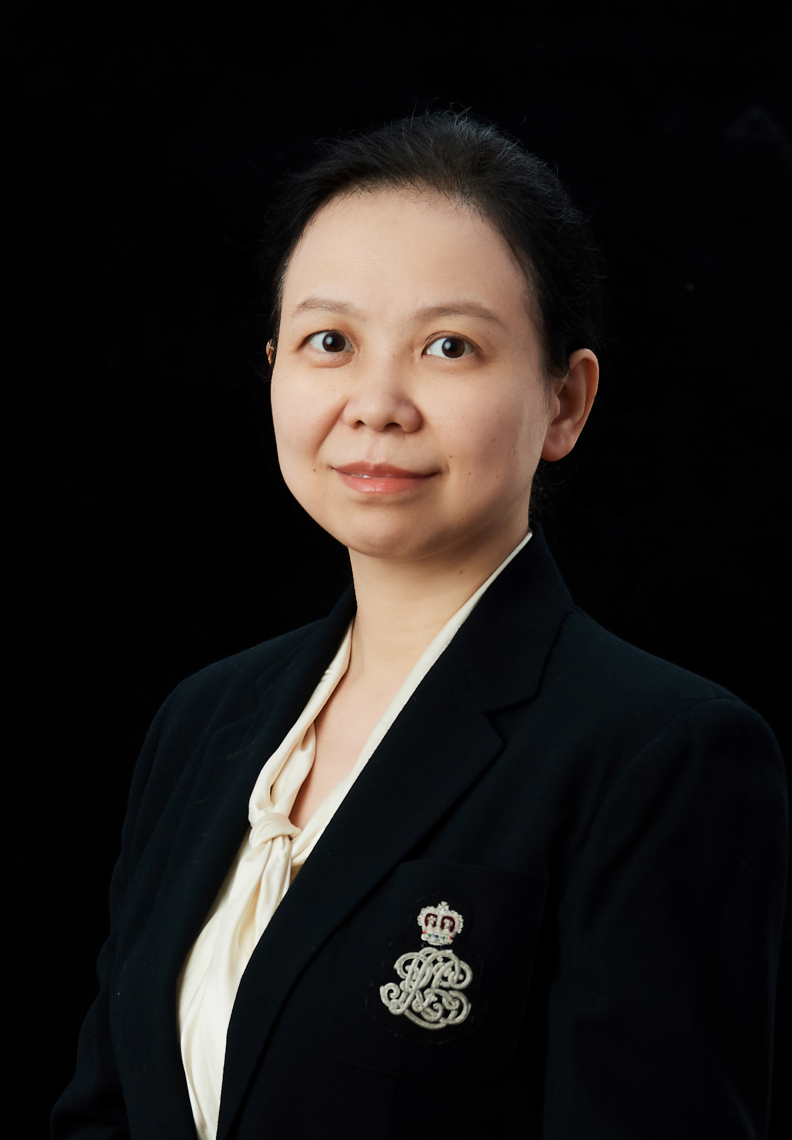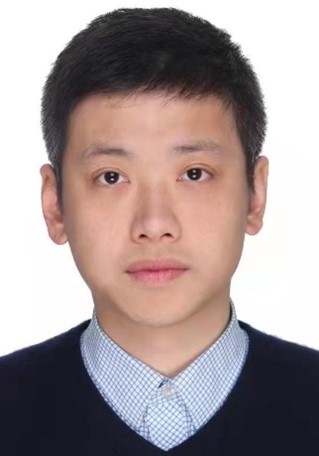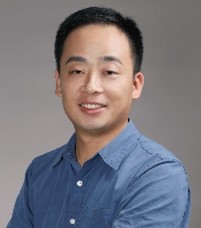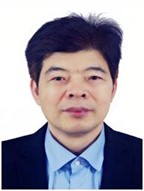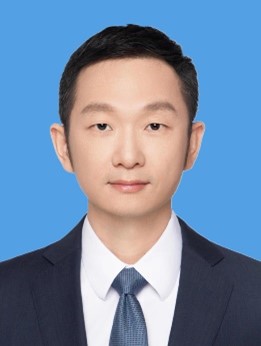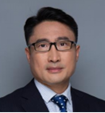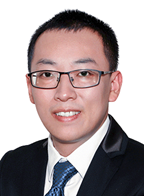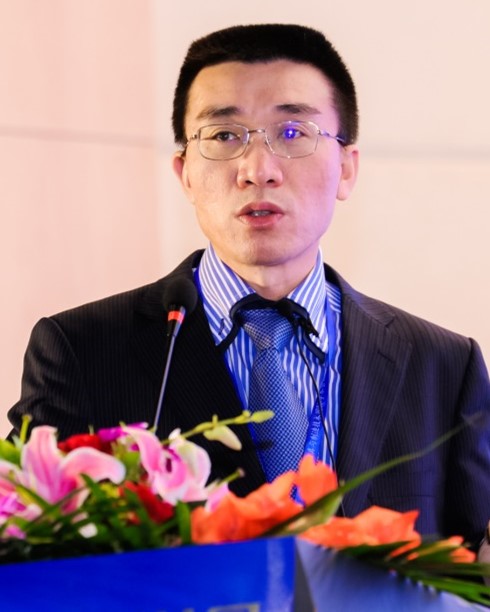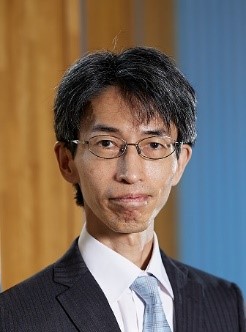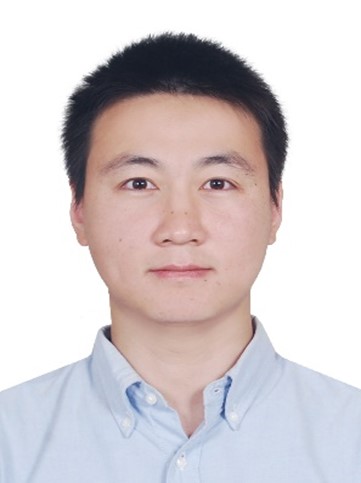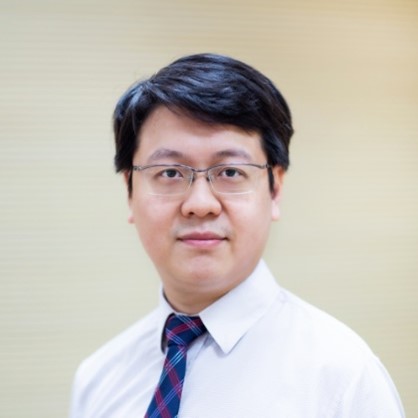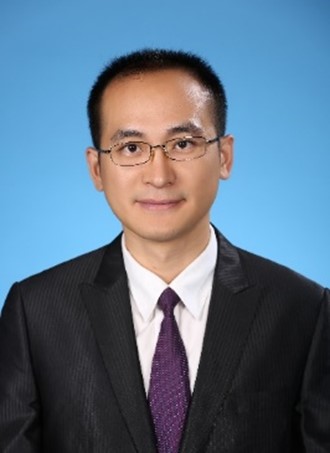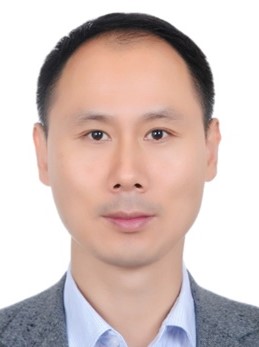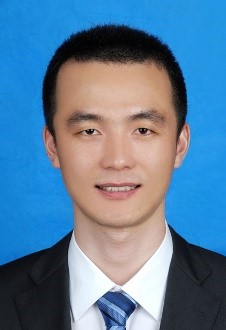|
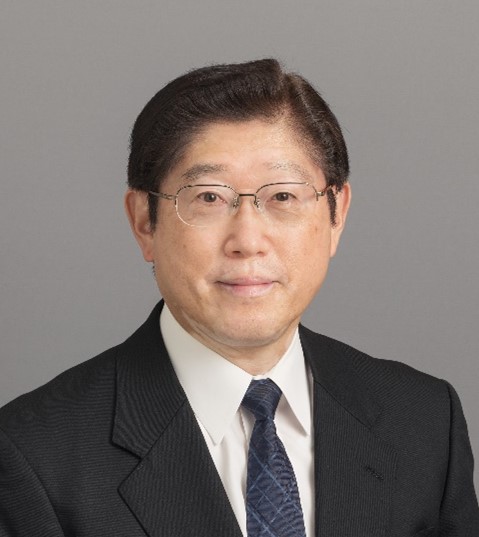
Hideki Aoyama
Faculty of Science and Technology
Keio University
Fully Automated Additive Manufacturing Using Directed Energy Deposition (DED)
Abstract: The talk of Emeritus Professor Aoyama is about “Fully Automated Additive Manufacturing Using Directed Energy Deposition (DED)”. In the processes of DED, the standoff distance (SOD), which is the distance between the melt pool and the powder injection nozzle, must be unstable. The unstable SOD makes a model-shape inaccurate, makes model-quality uneven, and sometime makes modeling impossible. Since the SOD is unstable, modeling using DED requires a lot of trial and error. Emeritus Professor Aoyama has developed a fully automated DED system which can execute modeling by just giving the CAD data of a required shape. The DED system measures the SOD in-process and generates modeling paths keeping the optimum SOD in real time. The DED system also makes it possible to automatically add additional printing to areas with insufficient shape for achieving high-precision printing.
Biography: Dr. Hideki Aoyama is an emeritus professor at Keio University. He received a doctoral degree from Hokkaido University in Japan. From 1992 to 1993, he was a visiting researcher at the University of California, Davis. In 1996, when he became an associate professor at Keio University, he established a digital design & digital manufacturing laboratory.
Emeritus Professor Aoyama served as the president of the Japan Society for Die and Mould technology (JSDMT) in 2016 and 2017. He was the chairman of the International Committee for Abrasive Technology (ICAT) in 2016 and 2017. He also served as a vice president of the Japan Society for Precision Engineering (JSPE) in 2018 and 2019.
In research activity, he developed digital design methodology that automatically create aesthetic design based on mathematical models of natural phenomena. He also developed many automatic systems including manufacturing inspection with AI, process planning and NC program generation for multi-axis machine tools, and high-speed/high-accuracy machining for free curved surfaces. Recently, he is especially interested in developing automatic molding system using a metal 3D printer (DED) and developing a femto-second laser ablation system.
|
|
|
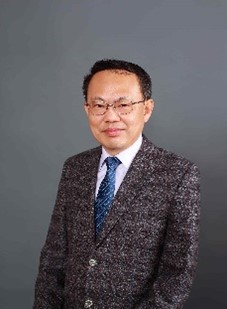
Liang-Chia Chen
Department of Mechanical Engineering
National Taiwan University
Advancements in Optical Metrology for Next-Generation Semiconductor Packaging
Abstract: The talk will explore recent innovations and hurdles in optical metrology on advanced semiconductor packaging. As miniaturization progresses, optical metrology emerges as an indispensable tool in industries like semiconductor manufacturing, attributed to its non-contact, high-resolution, and swift measurement abilities, making it pivotal in advanced processes such as automated optical inspection (AOI). Yet, the emerging need for precise 3D integrated circuit packaging characterization in semiconductors introduces sizable challenges in optical metrology. Addressing these challenges is crucial to cater to stringent in-line process requisites. This presentation will outline predominant optical measurement techniques in semiconductor production, including CD-SEM, X-ray or EUV scatterometry, reflectometry for OCD metrology, AFM, Superoptics for imaging, white light interferometry, and confocal microscopy. The talk tries to shed light on their inherent constraints while anticipating breakthroughs. Furthermore, the talk will illuminate recent progress in optical metrology, offering a perspective on the evolution of various techniques and existing technological barriers.
Biography: Dr. Liang-Chia Chen is a full-time professor in the Department of Mechanical Engineering at National Taiwan University (NTU). He earned his Ph.D. in advanced manufacturing and mechanical engineering from the University of South Australia in 2000. His research specializations include precision metrology and manufacturing, semiconductor metrology, automated optical inspection (AOI), and 3-D machine vision algorithms for automation. He has been recognized with multiple awards including two outstanding research awards from the Ministry of Science and Technology (MOST) of Taiwan in 2016 and 2021, consecutive National Year Invention gold awards in 2013 & 2014, and a 2014 outstanding award on technology transfer from MOST. To date, he has authored a textbook, three book chapters, over 120 peer-reviewed journal papers, and holds 60 international patents. He served as the president of the International Committee of Measurement and Instrumentation (ICMI) from 2015-2017 and is now a steering committee member in both ICMI and IMEKO. Additionally, he is involved in ISO as a board member in TC14. Dr. Chen is affiliated with multiple professional organizations including SPIE, SME, IEA, CIE, TSPE, AOIEA, CIAE, and CMS.
|
|
|
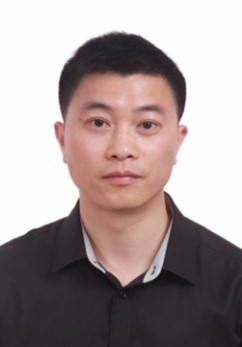
Shanyong Chen
College of Intelligence Science and Technology
National University of Defense Technology
Interferometric testing and alignment of multiple optical surfaces based on CGHs
Abstract: Surface metrology plays a vital role in optics manufacturing, both in corrective figuring process which requires feedback of the surface error and in alignment of optical systems which requires monitoring the surface orientations. This talk presents interferometric solutions based on computer generated holograms (CGHs) to measurement and alignment of multiple optical surfaces for high profile imaging systems. The null testing of aspheres, off-axis aspheres, extended polynomial surfaces and cylinders/acylinders is introduced, in combination of subaperture stitching to extend the range of measurement. Special issues regarding the CGHs are discussed on uncertainty, traceability and correction of mapping distortion. CGH is versatile with multiple functional patterns fabricated on a single substrate, which makes it excellent for alignment of multiple surfaces. Examples are given for two coaxial aspheres, two off-axis surfaces with unparallel axes, back-to-back surfaces, face-to-face surfaces and a four-mirror telescope. Simultaneous measurement of multiple surfaces with orientations included facilitates alignment of telescopes. And the CGH-based testing allows design and corrective machining of monolithic multiple surfaces, which makes the adjustment-free assembly possible.
Biography: Prof. CHEN Shanyong is from College of Intelligence Science and Technology, National University of Defense Technology (NUDT), Changsha, China. He received the B.S. degree and Ph.D. degree in Mechanical Engineering from NUDT in 2000 and 2006, respectively. His current research interests focus on optical testing, ultra-precision machining and measurement. He has published over 50 papers in learned international journals and referred conferences, and contributed 2 books. He holds one US patent and 20 China patents in the field of optical testing. He has presented over 20 invited talks in international or domestic conference sessions.
|
|
|
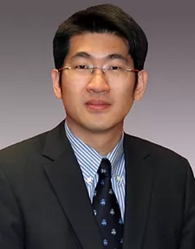
Shih-Chi Chen
Department of Mechanical and Automation Engineering
The Chinese University of Hong Kong
Digital holography-based micro-additive manufacturing
Abstract: There has been a compelling demand of fabricating high-resolution complex 3D structures in various engineering fields. While two-photon lithography (TPL) largely satisfies the need since its introduction, its low writing speed and high cost make it impractical for many large-scale applications. On the other hand, TPL often requires multiple trial and errors steps to identify the optimal parameters with limited reproducibility. In this seminar, I will present a digital holography-based TPL platform that realizes parallel printing with up to 2000 individually programmable laser foci to fabricate complex 3D structures with a minimum feature size of 90 nm. This effectively improves the fabrication rate to 2,000,000 voxels/sec. The promising result is enabled by the polymerization kinetics under a low-repetition-rate regenerative laser amplifier, where the smallest features are defined via a single laser pulse at 1 kHz. To improve the reproducibility of TPL, a high-speed metrology system is developed based on optical diffraction tomography and integrated with the TPL platform to monitor the 3D refractive index as well as laser doses of the printed part in situ at 300 Hz in. The precision, rate, and reproducibility of the new TPL platform were verified by the fabrication of large-scale metastructures and optical devices of up to centimeter-scale. Our new methods provide an effective and low-cost solution to scale-up the fabrication of functional micro- and nano-structures, enabling TPL for industry-scale applications.
Biography: Dr. Shih-Chi Chen is a Professor in the Department of Mechanical and Automation Engineering at the Chinese University of Hong Kong. He received his B.S. degree in Mechanical Engineering from the National Tsing Hua University, Taiwan, in 1999; and his S.M. and Ph.D. degrees in Mechanical Engineering from the Massachusetts Institute of Technology, Cambridge, in 2003 and 2007, respectively. Following his graduate work, he entered a post-doctoral fellowship in the Wellman Center for Photomedicine, Harvard Medical School, where his research focused on biomedical optics and endomicroscopy. From 2009 to 2011, he was a Senior Scientist at Nano Terra, Inc., a start-up company founded by Prof. George Whitesides at Harvard University, to develop precision instruments for novel nanofabrication processes. His current research interests include ultrafast laser applications, biomedical optics, precision engineering, and nanomanufacturing. Dr. Chen is a Fellow of Optica (formerly OSA), Fellow of American Society of Mechanical Engineers (ASME), senior member of SPIE, and members of the American Society for Precision Engineering (ASPE) and Hong Kong Young Academy of Sciences (YASHK). He currently serves as the Associate Editor of ASME Journal of Micro- and Nano-Manufacturing, IEEE Transactions on Nanotechnology, and HKIE Transactions. In 2003 and 2018, he received the prestigious R&D 100 Awards for developing a six-axis nanopositioner and an ultrafast nanoscale 3D printer respectively.
|
|
|
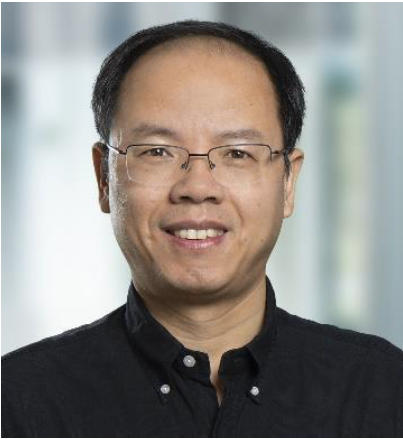
Gaoliang Dai
3D Nanometrology
Physikalisch-Technische Bundesanstalt
Accurate and Traceable Reference Nano Dimensional Metrology
Abstract: Nanometrology covers a wide range of metrology techniques for enabling characterisation and measurement of nanomaterials, structures, components, devices, and systems at the nanoscale. Adequate nanometrology is key to innovations in nanotechnology and nanoscience, such as understanding the interaction mechanism between atoms, controlling nanomanufacturing processes, optimising nanoscale products as well as preventing nanotoxicity. Traceability is a fundamental issue for nano-dimensional metrology, and its absence inhibits the comparison of tools from different manufacturers, and limits knowledge about the real size of fabricated features.
This keynote paper will offer an overview of recent advancements for accurate and traceable nanoscale dimensional metrology, particularly using the atomic force microscopic (AFM) techniques. Research for two kinds of fundamental calibration tasks of nanometrology: (i) calibration of geometrical parameters (i.e. magnification, nonlinearity, orthogonality, etc.) and (ii) calibration of 3D parameters such as critical dimension (CD), line edge/width roughness (LER/LWR), sidewall angle (SWA), etc., will be focused.
Some selected application examples of the developed nanometrology techniques will be demonstrated, for instance, (i) development of an extreme ultraviolet (EUV) photomask standard; (ii) calibration of various nanoscale standards; and (iii) development of a novel material measure for characterising 2D Instrument Transfer Function (ITF) of various optical areal surface topography measurement tools.
Biography: Dr. Gaoliang Dai is currently a research scientist and head of the working group “3D nanometrology” at the Physikalisch-Technische Bundesanstalt (PTB) – the national metrology institute of Germany. Gaoliang gained a BSc and a PhD in optical engineering from the Tsinghua University, P. R. China, in the year of 1994 and 1998, respectively. He was a R&D engineer in the Physik Instrument (PI) GmbH & Co till the year 2001 before he joined the PTB. His research interests including the dimensional nanometrology, nanopositioning, interferometry, AFM and TEM techniques. He has received research fundings from EMPIR, ECSEL JU, ENIAC JU, TransMeT and industry in over ten projects. He has authored more than 100 papers in peer reviewed highly ranked journals, as well as offered a number of keynote and invited presentations in international conferences.
Gaoliang serves as an editorial board member for the journals Nanomanufacturing and Metrology, Metrology and Measurement Technology. He is a council member of the International Committee on Measurements and Instrumentation (ICMI), and a member of the Metrology Focus Team of the IEEE-International Roadmap for Devices and Systems (IRDS). In addition, he is also a guest university professor, teaching lecture as well as supervising master and PhD students.
|
|
|
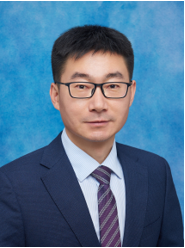
Zhigang Dong
State Key Laboratory of High-Performance Precision Manufacturing
Dalian University of Technology
Photoelectrochemical Mechanical Polishing (PECMP) Theory and Technology for GaN Substrates
Abstract: Gallium nitride (GaN) material has excellent properties, including high thermal conductivity, strong breakdown field, and high-temperature resistance. Thus, GaN is widely used in aerospace, artificial intelligence, and among fields. However, high hardness and strong chemical stability of GaN material lead to low polishing efficiency, which seriously restricts its application. For the issue of an extremely low material removal rate of GaN substrate processing, a new method called Photoelectrochemistry Mechanical Polishing (PECMP) was proposed and a PECMP processing system based on photoelectric chemical adaptability was constructed. The influence of photochemical action on the material removal during the processing was studied to reveal the material removal mechanism and the formation mechanism of the super-smooth surface of GaN substrate PECMP processing. Further, the reasonable process conditions and process parameters of GaN substrate PECMP were determined and the PECMP principle prototype and engineering prototype were developed. Low damage and efficient processing of GaN substrate using PECMP can be achieved. The polishing efficiency is improved by more than one order of magnitude compared with the traditional CMP process.
Biography: Dong Zhigang is a professor and doctoral supervisor at the School of Mechanical Engineering at Dalian University of Technology, and the director of the Institute of High Performance Manufacturing. He is also the recipient of the National Science Foundation for Distinguished Young Scholars, the top young talent in the National "Ten Thousand Talents Plan", and the expert of the 14th Five Year Key R&D Plan Group of the Ministry of Science and Technology. He received his Bachelor of Engineering Dalian University of Technology in 2002 from and Ph.D. of Engineering from the University of Queensland and Dalian University of Technology in 2010. He has won the second award of China National Technology Invention Award, Silver Award of China Patent Award and the first award of Technology Invention Award of Liaoning Province. He is a member of International Conference Abrasive Technology (ICAT) and a member of Extreme Manufacturing Institution of Chinese Mechanical Engineering Society. His researches focus on high-efficiency machining of difficult-to-cut materials and precision/ultra-precision processing technology and equipment. He has published over 150 journal papers, and obtained 7 international invention patents and more than 140 Chinese invention patents.
|
|
|

Yongsheng Gao
Department of Mechanical and Aerospace Engineering
The Hong Kong University of Science and Technology
In-process Form Profile Optical Measurement under Coolant Condition
Abstract: In-process measurement provides feedback for control of workpiece precision in terms of size, form error, and roughness. It can be used for precision control of a machining process to improve productivity and reduce defect rates. To avoid workpiece surface scratch and measurement stylus wear, non-contact methods are more favorable when compared with contact methods. Optical measurement methods are of the non-contact type and possess high precision. Therefore the methods of the kind should be used for in-process form profile measurement.
In precision machining, opaque coolant is commonly used to reduce heat generation and thermal deformation on workpiece surface. However, use of coolant will introduce an opaque barrier problem if the optical measurement methods are used.
To solve this key opaque barrier problem, several approaches have been proposed by Gao et al, including the water beam approach, the single air beam approach, the multiple air beam approach, and also the dual coolant displacing medium method. The key technique in the proposed methods is the use of assisting fluid beams to overcome the opaque barrier of coolant to build a small zone that is optically clean, which is termed as transparent window. This will allow the workpiece surface y(x, z) accessible to an optical measurement system of choice.
In this paper, models of the proposed methods are introduced together with the working principles and the key features of the four methods. New in-process form profile optical measurement systems are developed, which are capable of measuring workpiece surface y(x, z) at high precision under coolant condition. Measurement system performance tests are presented. Coolant removal capabilities of the four methods and performance enhancements are also discussed.
Experimental results show that workpiece surface y(x, z) can be measured successfully with the standard deviation up to 0.301 μm even under a massive amount of coolant where the coolant thickness is 15 mm, a relative uncertainty of 2 up to 4.35% and the workpiece surface deeply immersed in the opaque coolant, a condition under which so far no existing systems are able to perform and deliver.
Biography: Dr. Yongsheng Gao’s research is in precision machining and precision in-process optical measurement. He has published more than 200 journal and conference papers, jointly co-edited 6 conference proceedings and 2 journal special issues, with 12 invention and utility patents granted by the US and China. Dr. Gao also supervised 5 PhD students who now become professors of top Chinese universities and entrepreneur of industry who are internationally competitive. Dr. Gao successfully organized 2 international conferences in precision machining and precision measurement. Dr. Gao was a co-founder of the International Committee for Abrasive Technology in 2002 and is the general secretary of the International Committee on Measurements and Instrumentation since 2003, both organizations have successful international conferences on annual and biannual basis, respectively, for specialists of the precision engineering field worldwide.
|
|
|
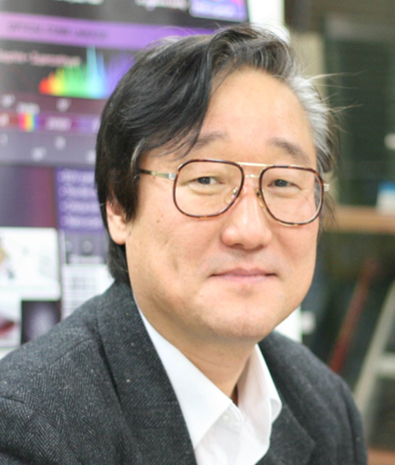
Seung-Woo Kim
Department of Mechanical Engineering
Korea Advanced Institute of Science and Technology
Comb-based Optical Frequency Synthesizer for Precision Metrology with 15-digit Accuracy
Abstract: A talk will be given on the optical frequency synthesizer developed at KAIST, South Korea based on the optical frequency comb created from an Er-doped fiber laser. Being stabilized to an ultra-low expansion (ULE) glass cavity with a fractional frequency stability of 3.8×10−15 at 0.1s averaging, the comb-rooted synthesizer is configured to produce multiple optical frequencies of ultra-narrow linewidth of 1.0 Hz at 1s with an output power of tens of mW per each channel concurrently. Diode-based stimulated emission by injection locking is a key mechanism that allows comb modes to sprout up with sufficient power amplification but no loss of original comb frequency stability. Multi-channel frequencies are individually selectable with a 0.1GHz increment over the entire comb bandwidth spanning 4.25THz around a 1550nm center wavelength. A series of out-of-loop test results is discussed to demonstrate that the frequency synthesizer is able to provide stable frequencies not only in the optical domain but also in the microwave and Terahertz ranges by heterodyning two comb modes arbitrary chosen. Such output frequencies will permit diverse applications to be accomplished with 15-digit accuracy particularly in the fields of interferometric dimensional metrology, optical clocks comparison, absorption spectroscopy, photonic microwaves generation, and coherent optical telecommunications as illustrated in Fig. 1.
Biography: Prof. Seung-Woo Kim obtained his bachelor degree in Mechanical Design from Seoul National University in 1978, and received his MS degree in Mechanical Engineering from the Korea Advanced Institute of Science and Technology (KAIST) in 1980. He went over to United Kingdom in 1981 for further study and obtained his Ph.D. degree in Precision Machine Systems Design from Cranfield University in 1984. He came back to Korea and started his carrier as a scholar by joining KAIST in 1985. During the last 38 years in the Department of Mechanical Engineering, he has been teaching and leading a research group of graduate students, producing 70 PhD graduates under his supervision. His professional interests are precision optical technology with specialty on optical-mechanics system synthesis for precision machines design, optical interferometry for 3-D surface and thin-film metrology, and ultrafast photonics for nano-scale fabrication and ultra-precision measurements. He has published ~ 400 technical papers, ~ 600 presentations in conferences, and ~ 80 patents. He has been working as principal investigator for numerous national and industrial research projects and currently involved in an important national creative research initiative project for the development of next generation precision engineering key technologies using femtosecond pulse lasers. He has also actively been involved in international academic societies for organizing on-time conferences for leading-edge precision engineering optical technologies. He was president of the Korea Society of Precision Engineering (KSPE) during the term of 2011 and is currently a member of OSA (Optical Society of America), SPIE (International Society of Optical Engineering) and CIRP (International Academy for Production Engineering).
|
|
|
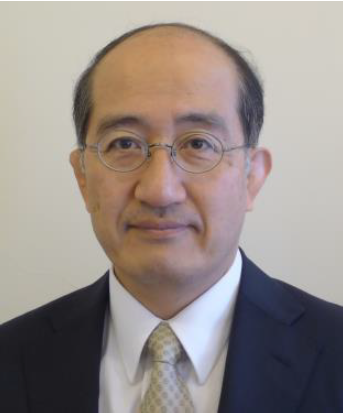
Masanori Kunieda
Department of Precision Engineering
The University of Tokyo
Challenges in electrochemical machining
Abstract: Electrochemical machining (ECM) is known as a promising method that can machine difficult-to-machine metallic materials with high efficiency and smooth surface roughness compared to electrical discharge machining (EDM). However, it is difficult to achieve higher machining accuracy than EDM because the gap width in ECM is larger than in EDM. In addition, the gap width distribution is likely to be uneven because the temperature rise due to Joule heating and bubble formation locally change the electrical conductivity of the electrolyte, making it difficult to reproduce the tool geometry on the workpiece. Therefore, ECM micromachining is difficult for the same reason. In addition, while any electrically conductive material can be machined by EDM, refractory materials such as tungsten, titanium, and chromium, which are easily passivated, are difficult to dissolve without the use of toxic chemicals. Finishing tungsten carbide and tool steel is also difficult because the multi-phase microstructure and carbide precipitates hinder smooth surface finishing due to the uneven distribution of electrochemical potentials over the workpiece surface. Therefore, this keynote will present some challenges to overcome these problems. First, the inter-electrode gap phenomena are visualized using a transparent electrode to understand the detrimental influence of bubbles unevenly distributed in the gap on machining accuracy. Subsequently, ECM was performed in a stationary electrolyte using the newly developed stamp flushing method to obtain a uniform gap width distribution. Micromachining of tungsten and tungsten carbide was carried out using a bipolar pulse. The bipolar pulse was also useful for obtaining a smooth surface in processes such as electrolyte jet machining and wire electrochemical machining, in which the workpiece surfaces are scanned by tool electrodes.
Biography: Professor Masanori Kunieda received his PhD from the University of Tokyo in 1985. He worked for Tokyo University of Agriculture and Technology and the University of Tokyo for 38 years, retiring in 2023. He is now an emeritus professor at both universities and a technical advisor to FANUC and Sodick. His main areas of research are electrical discharge machining and electrochemical machining. He has authored 267 refereed journal papers and received 61 awards. He has supervised 23 PhD students and 80 Masters course students. He has served as President o f the Japan Society of Electrical Machining Engineers and is currently Vice president of the Japan Society for Precision Engineering and Editor in Chief of the J. of Int'l Soc. for Precision Engineering and Nanotechnology.
|
|
|
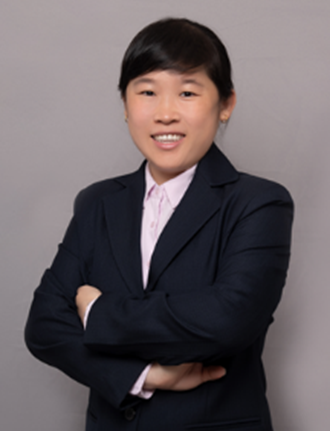
Lihua Li
Sino-German College of Intelligent Manufacturing
Shenzhen Technology University
Non-isothermal Hot Embossing Molding of High Melting Point Glass Lens
Abstract: Since glass optical elements have the advantages of high transparency, there is a growing demand of glass optical elements with high precision and low cost. And hot embossing technology (isothermal/non-isothermal) for the manufacturing of glass optical elements is the mainstream research direction.
Isothermal hot embossing technology needs to heat the whole cavity (mold core, mold frame, protective coating and glass), while non-isothermal hot embossing technology only needs to heat the mold core. At the same time, it simplifies the temperature control and pressure control system and overcomes the deficiencies of isothermal hot embossing technology (long processing cycle, high energy consumption and low efficiency, etc.).
We proposed a non-isothermal hot embossing technology for high-efficient and low-cost optical elements fabrication in various shapes. It only heated the coating and glass on the mold core surface to increase the heating rate and reduce energy consumption. On this basis, we analyzed the consistency of mold core and glass lens surface profile, and proposed a process parameter presetting method based on thermal simulation and an intelligent glass hot embossing machine control method based on PC-PLC. The technology can be used for fabricating various lenses such as spherical surfaces, aspherical surfaces, and freeform surfaces (including microlens arrays), and has the advantages of high production efficiency and economic benefits.
Biography: LIHUA LI received the B.Sc. degree in School of Optics and Photonics from Beijing Institute of Technology, Beijing, China, and the Ph.D. degree in Department of Precision Instrument from the Tsinghua University, Beijing, China, in 2004 and 2012, respectively. She has been a Research Associate and a Scientific Officer with the State Key Laboratory of Ultra-precision Machining Technology, Hong Kong Polytechnic University, Hong Kong, China, since January 2010 and September 2013, respectively. Currently she is an Academic Leader and Professor in Sino-German College of Intelligent Manufacturing, Shenzhen Technology University, Shenzhen, China. Her research interests include ultra-precision machining technology, advanced optics design, precision manufacturing, testing and its applications.
|
|
|
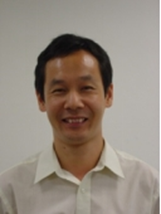
Kui Liu
Machining Technology Group
Singapore Institute of Manufacturing Technology (SIMTech)
Recent development of ultra-precision machining for optical applications
Abstract: Ultra-precision machining (UPM) is a key technology in the manufacturing of mechanical, optical and optoelectronics components achieving a surface roughness with few nanometers and form accuracy in sub-micrometer range. Discontinuous microstructures are increasingly used to enhance technical surfaces with additional functionalities, and the design of such microstructures also become more complicated and sophisticated for specific applications. Currently, it is impossible for conventional diamond turning to generate the large-scale discontinuous microstructures due to the loss of rotational symmetry of axis in the freeform structures, resulting low productivity, poor dimensional control, etc. Hence, manufacturers and researchers often choose to produce them by diamond cutting each individual segment and assembling all the segments together. We are working on ultra-precision machining by employing novel technologies/approaches, such as in-situ multiple-axes freeform machining processes, to fabricate complex and discontinuous microstructures on monolithic parts. This greatly improves the form accuracy of the generated surface while eliminating any lead time lost via the multiple iterations of setup, form measurement, repair, and reassembly.
Biography: Dr Liu Kui currently is a Principal Scientist in the Singapore Institute of Manufacturing Technology (SIMTech) focusing on novel machining technology development. He received his BEng and MEng degrees from Nanjing University of Aeronautics and Astronautics in 1989 and 1996, and PhD degree from the National University of Singapore in 2002. Dr Liu’s research interests include ultra-precision machining, ductile mode machining, nano/micro machining, hybrid machining, robotic machining, magneto-rheological finishing, gun drilling, micro EDM and diamond tool fabrication. He has carried out in both fundamental research and industry-based research, and some technologies developed have been implemented by the industry. He has authored 1 monography, co-authored 1 book and 6 book chapters, published 200 papers in prestigious international journals and conferences, filed 4 patents and 24 technical disclosures. He also serves an associate editor and editorial board member of serval international journals such as IJEM, NMME, Machines and DAE.
|
|
|
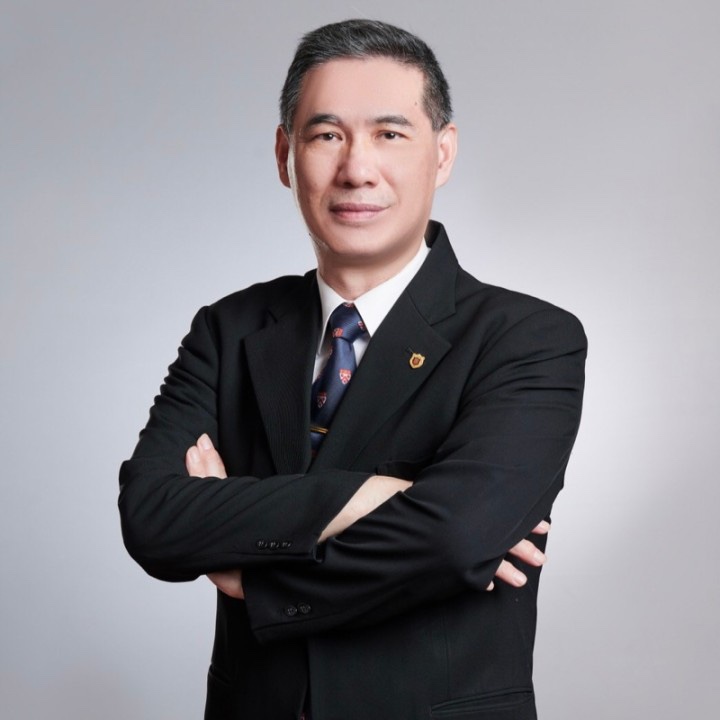
Yung-Kang Shen
School of Dental Technology
Taipei Medical University
Surface modification of biomedical metals by femtosecond laser
Abstract: Most dental implants currently on the market are treated through surface sandblasting or acid etching, resulting in random and non-reproducible geometric shapes and surface roughness values. After implantation into the human body, this may lead to random orientations of bone cells, consequently causing the formation of scar tissue.
In this study, femtosecond laser processing was employed, which can precisely control and produce regular-shaped textures on the surface of biomedical metal (Ti6Al4V). The experiments varied laser fluence, scan speed, and scan number to create grooves, and holes with different widths and depths.
Biomedical metals with surface microstructures exhibited better hydrophilicity and higher surface roughness. When subjected to cell culture using MG63 cells, biomedical metals with microstructures displayed higher cell activity.
Biography: Professor Yung-Kang Shen received his Ph.D. degree from the National Taiwan University, Taipei, Taiwan, in 1995. He has been a Professor at the School of Dental Technology at Taipei Medical University (TMU) since 2014. He has been a Chairman of the School of Dental Technology of TMU since 2018. He is also the Director of the Bio-Medical Nano/Micro Forming Lab of TMU, the Researcher of the Nano Tissue Engineering and Image Research Center of Taipei Medical University Hospital (TMUH), the Researcher of the Sleep Research Center of Taipei Medical University Hospital (TMUH), the Researcher of the Department of Otolaryngology of Taiwan Adventist Hospital (TAH). He is the Chairman of the Taiwan Oral Biomedical Engineering Association, Co-Organizing Directors for the Asia Pacific Society for Materials Research (APSMR), Co-Organizing Directors for the Asia Pacific Society for Biology and Medical Sciences (APSBMS), the Supervisor of SME Taipei Chapter and the Director of Taiwan Society for Abrasive Technology. He has been an Adjunct Professor of University Airlangga (Indonesia) since 2022. He has been an Adjunct Professor of University Hasanuddin (Indonesia) since 2020. He has been a Guest Professor at Zhejiang University of Technology (China) since 2017. He has been a Part-time Professor at Shandong University (China) since 2016. He has been a Visiting Professor at Changchun University of Science and Technology (China) since 2012. Professor Shen is a project review committee member of the National Science and Technology Council (Taiwan). His research includes digital dentistry, metamaterial, scaffold fabrication (PCL/graphene), 3D/4D/5D printing, biomedical nano/micro forming technology, medical bionics design and manufacturing, and animal models for medicine therapy. Now, he has published more than 140 journal papers and 120 conference papers. Professor Shen has served as the Plenary Speaker or keynote speaker at more than 30 international seminars. Professor Shen was awarded the Best Paper Award for the 3rd International Forum on Systems and Mechatronics in Singapore in 2010. He was also awarded the First Prize in Poster Presentation Award for the 2nd Research Week-International Symposium 2012 of COM on Dental Technology, Oral Health Care, and Biomedical Devices in Taipei in 2012. He was also awarded the Most Cited Article Award, 2012 to 2013 for "International Journal of Precision Engineering and Manufacturing" (SCI Journal). Professor Shen was awarded the World’s Top 2% Scientists 2022-side by side of lifetime scientific influence (Stanford University). Professor Shen currently serves as the Editorial Board for Polymers (SCI Journal), Biology, Engineering and Medicine; Journal of Precision Medicine and Public Health; Open Access Journal of Science and Technology; International Open Access Journal of Translational Medicine; International Journal of Manufacturing Engineering; Japanese Journal of Medical Science and International Journal of Translational Science & Research.
|
|
|
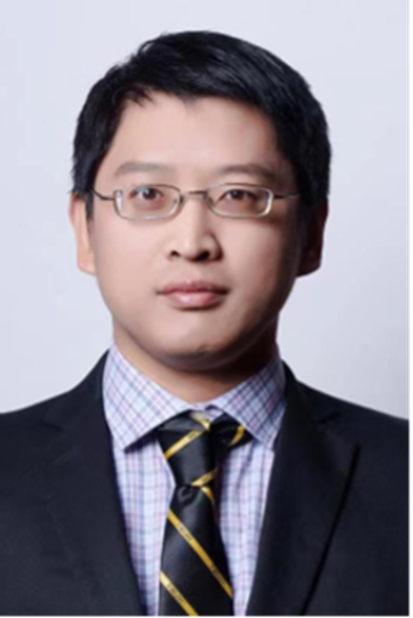
Jianfeng Xu
School of Mechanical Science & Engineering
Huazhong University of Science and Technology
In-situ Field Assisted Ultra-Precision Machining: Theory, Technology and Equipment
Abstract: As it is difficult to satisfy the requirements of ultra-high surface quality and accuracy by applying a single type of ultra-precision machining method, an in-situ field-assisted machining technology was proposed for the ultra-precision machining of the difficult-to-cut materials in the aerospace, advanced optics and high-performance ray detection devices. The high-precision energy field control, the material removal and failure mechanism and the high-quality surface forming mechanism were investigated and clarified in the field-assisted ultra-precision machining process. Hence, the arbitrary control of energy morphology, the nano-level material removal and the low damage surface generation are successfully achieved. The hard-brittle single crystal silicon with diameter over 80 mm has been efficiently and accurately fabricated by applying the diamond cutting technology. The profile error, surface roughness and the subsurface damage is less than 0.3μm, 0.5nm and 10nm respectively. Furthermore, the multi-field-assisted ultra-precision machining technology is innovatively proposed, and potential applications in infrastructure of national science and technology development are discussed.
Biography: Prof. Jianfeng Xu received the B.S. degree from the School of Mechanical Science and Engineering, Huazhong University of Science and Technology in 2001, and the Ph.D. degree in mechanical engineering from the University of California at San Diego in 2008. He has worked in Western Digital and Applied Materials with engineering position from 2008 to 2012. Since 2012, he has been a Professor at School of Mechanical Science and Engineering, Huazhong University of Science and Technology. Currently he serves as vice dean of School of Mechanical Science and Engineering and vice director of State Key Lab of Intelligent Manufacturing Equipment and Technology. His research interests include precision machining technology and intelligent manufacturing system.
|
|
|
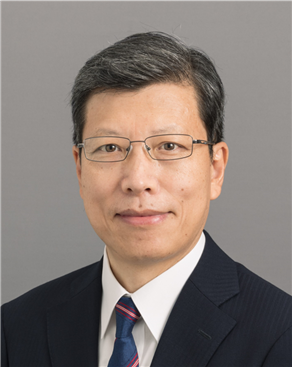
Jiwang Yan
Department of Mechnical Engineering
Keio University
Micro/nanostructured material generation from silicon waste - toward material resource sustainability in ultraprecision machining
Abstract: A huge amount of silicon waste is discharged from semiconductor and solar cell manufacturing processes, such as wafer slicing and grinding, which has become a crucial problem for material resource sustainability. In this talk, novel processes for silicon-based micro/nanostructured material generation from the slicing/grinding chips will be introduced, which provides potentials for fabricating silicon-based anodes for lithium-ion batteries. One example is generating micro silicon pillar on copper foils by laser irradiation. The fabricated pillar-on-foil structures were used as anodes for lithium-ion batteries and could effectively accommodate the volume expansion of silicon caused by ion storage with excellent discharge capacity and cycle characteristics. Another example is laser-induced core-shell nanoparticle/nanowire generation from silicon waste, which provides a sustainable material resource for manufacturing anodes of future high-performance lithium-ion batteries.
Biography: Jiwang Yan received his Ph.D. from Tohoku University in 2000 and is currently a Professor of Mechanical Engineering at Keio University, Japan (2012-), leading the Laboratory for Precision Machining and Nano Processing. As adjunct positions, he was appointed as a Leverhulme Visiting Professor at The University of Manchester, UK (2018-19), and serves as a Specially Appointed Professor at Tokyo Institute of Technology (2017-). His research areas include ultraprecision machining, micro/nano manufacturing, laser processing, nanomaterial and nanomechanics. As a principal investigator, he has led more than 20 nationally funded projects and over 70 joint research projects with industry. He has authored/co-authored 300+ peer-refereed journal papers, given 150+ keynote/invited talks, and received 40+ awards for his contribution in the manufacturing area. He is the chief-editor of handbook “Micro and Nano Fabrication Technology” (Springer 2018) and the author of book “Micro Nano Scale Laser Processing of Hard Brittle Materials” (Elsevier 2019). He is an executive director of JSPE and the chairman of publication sector and also serves the board of JSLT and the editorial boards of several international journals including IJMTM and IJEM. He is member of JSME, JSPE, JSAP, JSAT, ASPE, SME, euspen and CIRP, and fellow of ISNM.
|
|
|
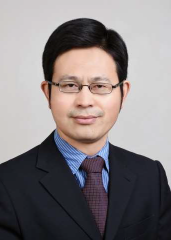
Shuming Yang
School of Mechanical Engineering
Xi'an Jiaotong University
Micro/nano measurement technology and the application in IC
Abstract: This report will introduce nano probes including plasmonic optical probe, carbon nanotube probe, and composite nano probe. The controllable fabrication process of plasmonic optical probe will be discussed, and an imaging system has been built to realize the nanofocusing of surface plasmons induced by the optical probe. The growth solution pick-up method and plasma method will be proposed to achieve controllable preparation of large aspect ratio carbon nanotube probes. It has effectively solved the challenge of measuring 3D nanostructures with high aspect ratios. The composite probe has further been made by a carbon nanotube probe integrated with an optical probe. Moreover, the report will also introduce the application of the probes in IC.
Biography: Prof. Dr. Shuming Yang is from Xi’an Jiaotong University (XJTU), China. His main research interests include nanofabrication and measurement, optical measurement and instrumentation, ultra-precision manufacturing and measurement etc. He has held more than 20 research projects including National Science Fund for Distinguished Young Scholars, National Key R&D Program of China, National Science and Technology Major Projects etc. He has published more than 200 papers and 2 books, owned over 100 patents of PCT, UK, European and China, achieved 9 technical awards. He was elected as a fellow of the International Society for Nanomanufacturing (ISNM), and a council committee member of Asian Society for Precision Engineering and Nanotechnology (ASPEN) etc. He is also an editor or a guest editor of JMS, IJPEMGT, IJRAT, NMME, MST, PE, IJAMT, Photonics etc. He delivered keynote and invited talks in academic conferences for more than 60 times.
|
|
|
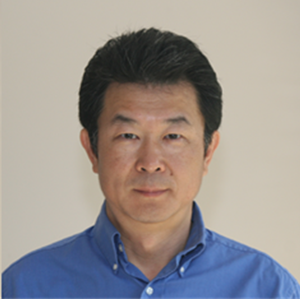
Allen Yi
Department of Systems Engineering
The Ohio State University
High Volume Replication of Micro and Nanoscale Optical Surface Structures
Abstract: In this presentation, we will report recent progresses in compression molding of precision glass optics using both soft PDMS (polydimethylsiloxane) and hard (nickel and nickel alloys) mold inserts and describe the advantages and limitations of each process. In an innovative approach, a single Fresnel microlens was diamond machined on brass substrate. The brass part was then used as a stamper to create a Fresnel microlens array on PMMA (polymethylmethacrylate) substrate. A PDMS mix was then cast off the plastic substrate to form the lens array replica. Using a non iso thermal forming process chalcogenide glass lens arrays with high fidelity were molded. In the second experiment, a PMMA master of a harmonic diffractive lens was machined using single point diamond turning. Then an electrolytic plating process was conducted to grow a reverse nickel mold. Compression molding was performed using the nickel mold to form the diffractive lens structures onto a glass surface. In both cases, surface measurements and optical testings showed that the replicated diffractive lenses have high tolerances with corresponding optical performance, demonstrating a high-volume, high precision and cost-effective process. Finally, we will discuss replication of anti-reflective surface structures and the possibility of forming metastructures using similar process.
Biography: Professor Allen Yi received his Ph.D. in mechanical engineering from Boston University in 1993. He subsequently joined Corning Precision Lens as a staff scientist. In 2002, Professor Yi joined The Ohio State University as an assistant professor. He was promoted to associate professor with tenure in 2008 and to full professor in 2012. His research activities have been in the general area of precision engineering with a focus on high volume optical fabrication, freeform and microoptics fabrication as well as micromachining processes for medical and biomedical device fabrication. Professor Yi’s current research interests include compression molding of glass optics and injection molding of high precision polymer optics. He has more than 80 referred journal publications, and one US patent. He has been the coordinator and member of the ASPE (American Society for Precision Engineering)’s scholarship review team. He chaired the spring topical meeting on micro and nano scale biomedical device fabrication for ASPE in 2005 and also served as session chairs at many ASPE annual meetings. Outside ASPE, he frequently participates in the conferences at EUSPEN and ASPEN. Professor Yi is an associated editor for Advanced Optical Technologies and International Journal of Extreme Manufacturing.
|
|
|
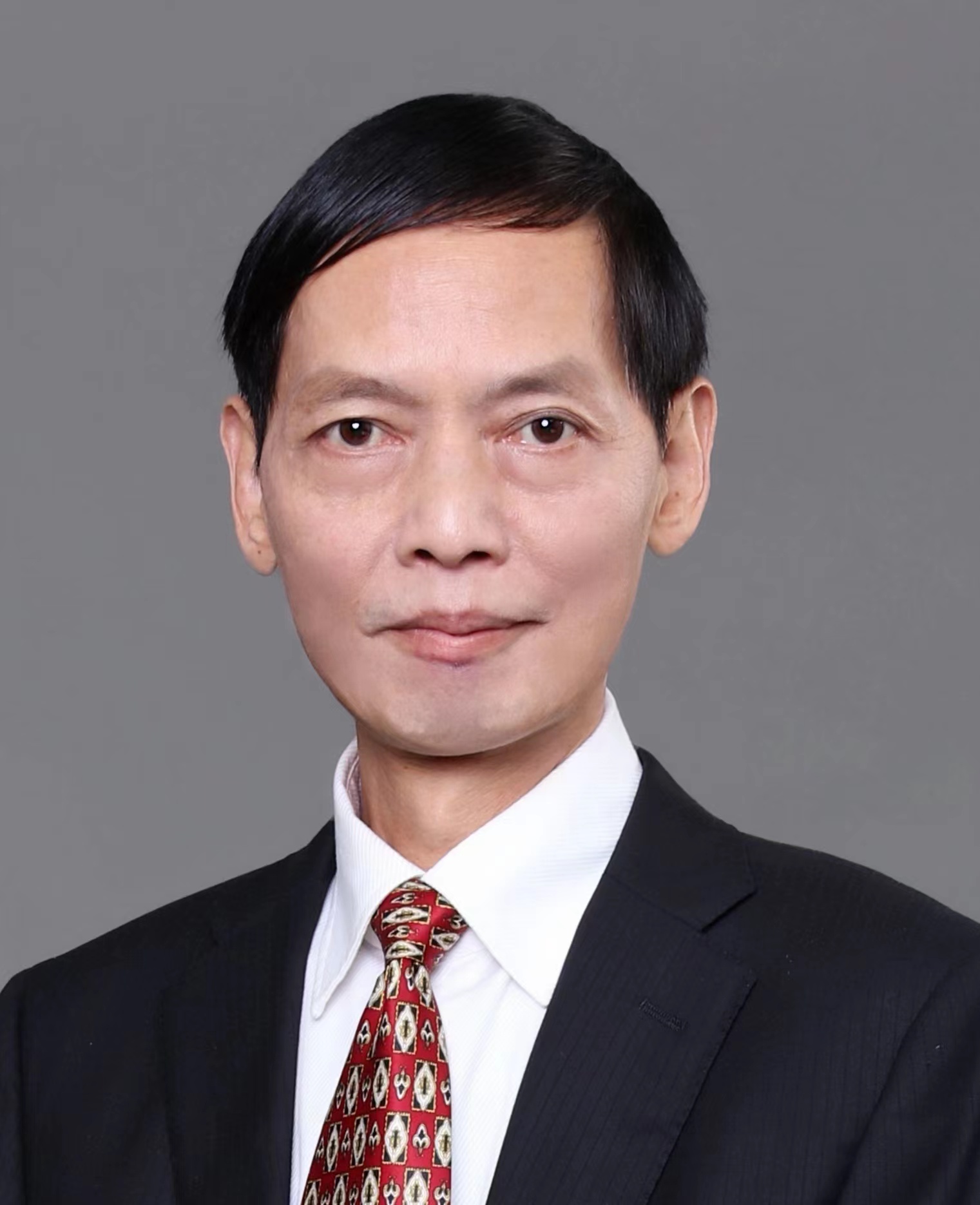
Julong Yuan
Ultra-Precision Machining Center
Zhejiang University of Technology
Force rheological polishing technology and its research progress
Abstract: Force rheological polishing is a technology that utilizes the non Newtonian properties of fluids to high efficiently and ultra precision polish the surface of workpieces. This report introduces the principle of force rheological polishing and its application examples in various surface polishing.
Biography: Julong Yuan is a senior professor at Zhejiang University of Technology and enjoys the special government allowance expert from the State Council of China. He is also recognized as a young and middle-aged expert with outstanding contributions in Zhejiang Province. He earned the bachelor, master, and doctoral degrees from Mechanical Engineering Department of Harbin Institute of Technology between 1979 and 1989. He served as a postdoctoral researcher and associate professor at Department of Mechanical Engineering, Zhejiang University from 1989 to 1998. He also pursued postdoctoral research at Kyushu University in Japan during this period. Currently, Julong Yuan holds the position of director of the Ultra-Precision Machining Center at Zhejiang University of Technology. He is concurrently the director of the Key Laboratory of Special Precision Grinding in Mechanical Industry and has previously served as the director of the National Engineering Research Center for High Efficiency Grinding at Hunan University. He is also the founder and organizer of the Xihu Swording Salon - International Forum on Advanced Precision Manufacturing and the Silk Road Symposium on Advanced Manufacturing (SAM). He serves as the Chinese Chairman of the China-Japan International Conference on Ultra-Precision Machining Process (CJUMP).
Julong Yuan has several academic roles, including serving as the Executive Council Member of the Production Engineering Subsociety of the China Mechanical Engineering Society. He is the Deputy Director of the China Abrasive Technology Committee, the Deputy Director of the China Precision Machining and Nanotechnology Committee, and the Deputy Chairman of the Cutting Advanced Technology Research Society of China. Additionally, he is a committee member of the International Abrasive Technology Committee and a full member of the Japan Society for Precision Engineering.
Throughout his career, Julong Yuan has been dedicated to teaching and research in precision and ultra-precision machining technology and equipment. He has led over 30 national and government technology projects and served as an editorial board member for journals such as the "Journal of Mechanical Engineering," "China Mechanical Engineering," and the "International Journal of Abrasive Technology." He has published over 300 academic papers both nationally and internationally and has authored five books. And he has been granted over 60 invention patents and has received two second-class National Science and Technology Progress Award, as well as six first-class awards at the provincial and ministerial levels.
|
|
|
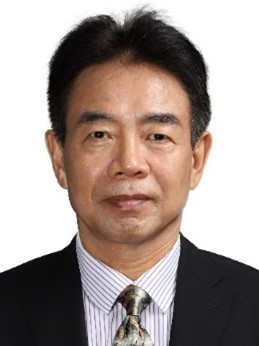
Bi Zhang
College of Engineering
Southern University of Science and Technology
Surface Integrity of Ti6Al4V Subjected to High-Speed Grinding
Abstract: High-speed grinding has been applied to difficult-to-machine materials for many industries. The talk will start with the fundamental theories in high-speed machining, with a focal point on surface integrity in high-speed grinding of Ti6Al4V. Experimental results will be reported on single-point and wheel grinding of the Ti6Al4V workpieces with a hierarchically ultrafine grain embedding structure through ultra-high strain rate deformation, and a transition from dislocation-mediated deformation to twin-mediated deformation under the ultra-high strain rate conditions. The talk also demonstrates how grinding-induced damage is significantly suppressed by increasing grinding speed, so as to improve the surface integrity of a ground Ti6Al4V workpiece.
Biography: Bi Zhang, Chair Professor of Mechanical and Energy Engineering, Southern University of Science and Technology. He has been engaged in long-term research on the fundamental theory and processes of high-speed precision machining, especially on difficult-to-machine materials. He is a fellow of The International Academy for Production Engineering – CIRP, and of The American Society of Mechanical Engineers – ASME, an associate editor of the International Journal of Extreme Manufacturing, and on the editorial board of the English edition of the Chinese Journal of Mechanical Engineering.
|
|
|
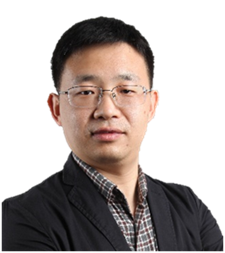
Xiaodong Zhang
School of Precision Instrument and Optoelectronics Engineering
Tianjin University
Advancing Towards the Fabrication and Implementation of Freeform Optics
Abstract: Freeform optics offer appealing attributes such as flexible design, lack of rotational symmetry, and complex analytical expression. These optics are typically large in size and demand precision in both surface accuracy and quality. Producing freeform optics involves designing, manufacturing, measuring, and evaluating. Over the past ten years, the manufacturing technology for freeform optics has advanced rapidly, leading to increasingly demanding requirements for their production and application. Within this realm, various processing methods have emerged, necessitating greater focus on innovative techniques such as fast tool servo turning, flying cutting, and integrated machining. These cutting-edge approaches enable the production of multi-surface freeform optics through the coordinated movement of cutting tools across multiple axes. However, In the manufacturing process of freeform optics, greater attention should be given to the interaction between the processing tool and the workpiece surface, drawing from materials science and kinematics. Additionally, the role of measurement in processing has grown in significance. Developing comprehensive measurement systems integrating all processing times and spaces will greatly improve processing accuracy and quality. Freeform optics have found applications in diverse industries such as short-focus projection, AR/VR, laser scanning, and laser radar, with room for further expansion into various optical-related aspects of daily life. However, challenges persist in system assembly due to the lack of reference for modeling or positioning, limiting the use of freeform optics in advanced optical systems. Currently, assembly relies heavily on human experience and subjective judgment, leading to high installation costs and resource requirements. Automated installation and adjustment, an emerging technology spanning optical design, mechanical automation, and computer artificial intelligence, offers a promising solution by guiding optical component installation through final performance evaluation. This approach opens up broader application possibilities for freeform optics in optical systems and enhances their adaptability.
Biography: Xiaodong Zhang has been deeply engaged in researching and developing ultra-precision manufacturing techniques and ultra-precision/precision optical testing methodologies for optical freeform surfaces. His scholarly contributions include 103 papers published in reputable SCI journals, and he holds 80 national invention patents. He has been recognized as a part of the inaugural cohort of young scientific and technological talents under the Tianjin Innovation Talent Promotion Plan. His accomplishments have been further celebrated with the prestigious Tianjin Science and Technology Progress Special Award, the "Young Researcher Award" by the Asian Society for Precision Engineering and Nanotechnology (ASPEN), among other distinguished awards. He also holds a fellowship with the International Society for Nanomanufacturing (ISNM), underscoring his influential standing in the field.
|
|
|
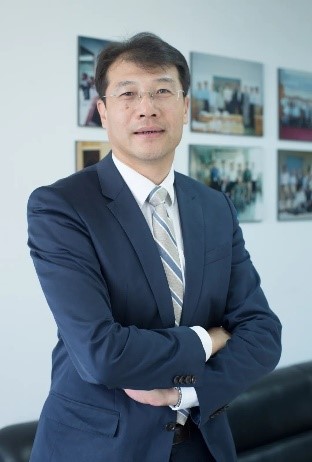
Xuejun Zhang
Changchun Institute of Optics Fine Mechanics and Physics, Chinese Academy of Science
Evolution of Space Optical Systems: ----From Aspheres to Freeforms
Abstract: Over the last decade, the performance of space optical systems has been significantly improved through the efforts of optical researchers in China and abroad. Two critical specifications of an Earth Observing (EO) system are resolution and swath. By this measure, China’s recently launched commercial EO systems have reached a world-class level. These inspiring achievements are the results of courageous innovations and substantial practices in reflective optical materials, optical design, aspheric fabricating and testing, and system assembly.
Advanced manufacturing technologies of optical systems include mirror blank preparation, optical design, fabrication, coating, testing, and system assembly, which is an enabling technology for high-performance optical systems. The imaging optical system is an information-collecting system, and an important indicator to assess its performance is the information-collecting capacity. For example, the requirements for the EO payloads are higher resolution and wider imaging swath. However, constrained by launch costs and working environments, the volume and weight of space optical systems are strictly restricted. Therefore, some common requirements for its manufacturing technology are summarized as follows. First, the mirror materials should have high specific stiffness and thermal deformation resistance to reduce the cost of launch weight and thermal control. Second, the systems with the large aperture, long focal length, and large field of view (FOV) simultaneously are needed to solve the contradiction of high resolution and wide swath, and this results in multiple-mirror on-axis or off-axis design. Aspheric surfaces or even freeform surfaces are employed to increase the design freedom and balance the large off-axis field aberrations. Nevertheless, the off-axis aspheric or freeform design causes asymmetric mirror shape and system layout. Consequently, unlike the conventional slow-lapping process, the deterministic computer-controlled optical surfacing (CCOS) technique is necessary to achieve higher accuracy and efficiency. Meanwhile, aspheric surface digital testing and system computer-aided alignment techniques are utilized through the whole process of milling, grinding, polishing, and system assembly to guide deterministic processing and verify the payload’s performance consistency in space and on earth.
In this talk, the latest progress of space optical systems over the last decade in China are introduced with the combination of several on-orbit examples. The technological advantages include silicon carbide (SiC) material, space optical system design and configuration evolution, digital measurement of complex optical surfaces, and computer-aided assembly and adjustment technology. In addition, the future trend of advanced optical system manufacturing technology is discussed.
Biography: Xuejun Zhang received his Ph.D. degree from the Changchun Institute of Optics and Fine Mechanics and Physics (CIOMP) in 1997. He is now Director of CIOMP. Dr. Zhang has been engaged in optical system design, manufacturing, and testing for more than 20 years, and led his team in achieving a major breakthrough in the high-precision manufacturing technology of 4.03 meter SiC mirrors. The overall results are of a world-leading level. He is also the team leader of the 30 Meter Telescope (TMT) Tertiary Mirror Manufacturing project. As principal investigator, he has completed a number of national research projects and won five National Awards for Achievements in Science and Technology. He was supported and rewarded by the National "Outstanding Youth" Fund, the Qian Xuesen Outstanding Contribution Award of the China Aerospace Foundation, and the Science and Technology Award of the Chinese Society for Space Science. Dr. Zhang is a Fellow of SPIE and a member of OSA and has published 185 peer-reviewed papers.
|
|
|
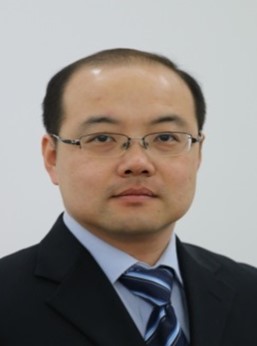
Xing Zhao
College of Electronic Information and Optical Engineering
Nankai University
Freeform Phase Plate in Filament-induced Fluorescence Spectroscopy (FIFS) System
Abstract: High power ultrafast femtosecond laser will form a unique plasma channel at the beam focus due to the nonlinear effect when propagating in the transparent optical medium, called as "filamentation". Filament-induced fluorescence spectroscopy (FIFS) is a technique using filamentation as the excitation source of fluorescence spectrum for detecting material components, which has important application value in monitoring atmospheric pollutants. However, when adopting the optical system to remotely focus femtosecond laser into filament, due to the aberration in the system, the shape of the focused beam spot is irregular, the radius increases, and the quality decreases. These will weaken the intensity of the filamentation, reduce the detection sensitivity of the system, and is not conducive to remotely detect the atmospheric pollutants with low concentration. Combined with the strong aberration compensation ability of optical freeform surface, we propose a method to introduce a transmission freeform surface phase plate into the FIFS system to compensate the system aberration. In our research, the freeform phase plate is designed, optimized and manufactured successfully. Moreover, the femtosecond laser filamentation system with freeform surface phase plate is adjusted and the laser filamentation experiment is carried out. The experimental results demonstrate the effectiveness of the freeform surface phase plate, with the shape regularity of the focusing spot improved and the radius significantly reduced. The intensity of femtosecond laser filament is greatly enhanced, as well. Our research results indicate that it is feasible to use optical freeform surfaces to compensate the aberration in the FIFS system, which is of great practical value for enhancing the intensity of femtosecond laser filamentation at a long distance and improving its remote sensing detection sensitivity.
Biography: Professor Xing Zhao, received his PhD degree in Optics Engineering from the Institute of Modern Optics, Nankai University in 2007. After that, he joint Nankai University as lecture, associate professor and professor. He visited and worked in Advanced Optics Manufacturing Center, the Hong Kong Polytechnic University in 2014. His current research interests are concerned with computational imaging and freeform optics. In last decade, he published more than 60 peer-reviewed journal articles and had 6 authorized patents. He has won two Scientific and Technological Progress Award (First Class) as co-contributor.
|
